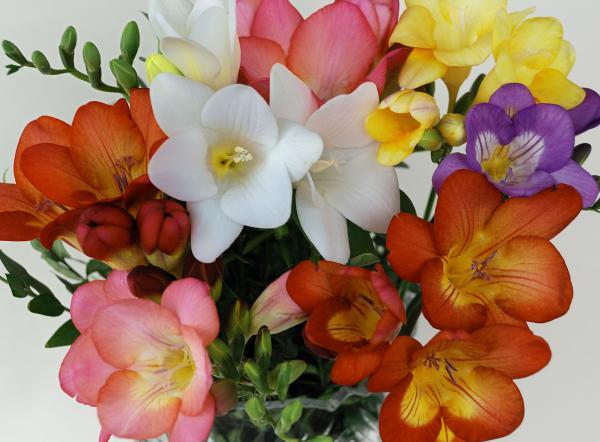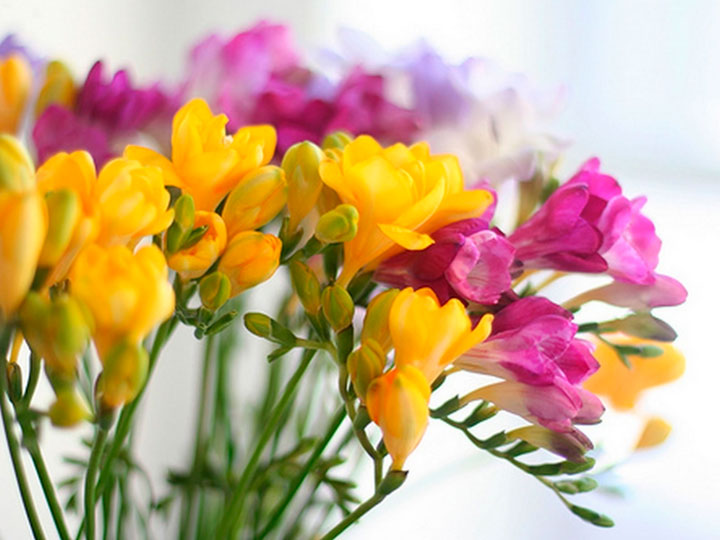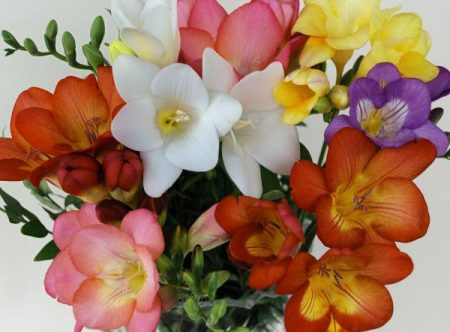 A wonderful African plant has won the hearts of our gardeners for a long time, and they learned how to create whole carpets from variegated colorful freesias, which, with their fragrance and bright flowering, overshadow many of our garden beauties. In addition, they are easy to grow and not capricious.
A wonderful African plant has won the hearts of our gardeners for a long time, and they learned how to create whole carpets from variegated colorful freesias, which, with their fragrance and bright flowering, overshadow many of our garden beauties. In addition, they are easy to grow and not capricious.
Landing
The soil for planting is being prepared in April. Usually they mix turf land, peat, sand and humus - all in the 1st part. The day before planting it is treated with manganese or any fungicidal solution. Bulbs are treated with the same solution.
By the way, if the bulbs were not in the store, you can grow freesia from seeds. For this, sowing is carried out in March. Depth of embedment - 5 mm. The container is covered with polyethylene or glass until seedlings appear. The room should warm up to 15 degrees. Necessarily need additional lighting and moderate watering. Two weeks later, when the third sheet appears, freesias are planted in separate trays of 6 pieces together. By May, the grown freesia will be ready for planting in the flowerbed.
It is better to plant freesia in partial shade, but it is also possible in the sun. Bulb planting depth is up to 10 cm, and the distance between them is 5 cm. The air temperature is the most suitable - no more than 15 degrees (this is necessary for plentiful flowering in the summer).
Look again how to plant aster on seedlings.
Freesia Care
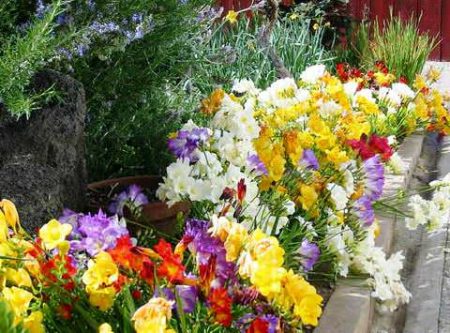
After planting, you need to water the plants. Watering should be done regularly, since soil moisture should be 70%. However, it is very important that during irrigation water does not fall on the plant. This can lead to decay. Water temperature 22.5 - 24.5 degrees. Watering time - in the afternoon, hours at 17.
For excellent growth and good flowering, freesia must be fed. Until they bloom, they are fed with a liquid solution of ammonium nitrate (ammonium nitrate) (1 g - 2 g). And when the flowers opened, the fertilizing alternates: a liquid solution of potassium salt (1 l - 2 g) and superphosphate solution (1 l - 4 g) every 14 days. Fertilizing is carried out after the plants have bloomed. Once every 15 days, they are fertilized with a superphosphate liquid solution (4 g per 1 liter).
Freesia - delicate plants. Strong wind gusts or large drops of rain can damage them. Therefore, when planting, you need to think in advance how to arrange the flowers on the flowerbed so that they have backwater.
Bulbs will sprout within three weeks. If the care for freesia was carried out correctly, then in the first days of August the first flowers may already bloom. Faded flowers are removed so that seed formation does not occur. All useful substances should go to the formation of new bulbs.
Good tips on how to plant flowers, consistent with lunar calendar, very comfortably.
Care after flowering
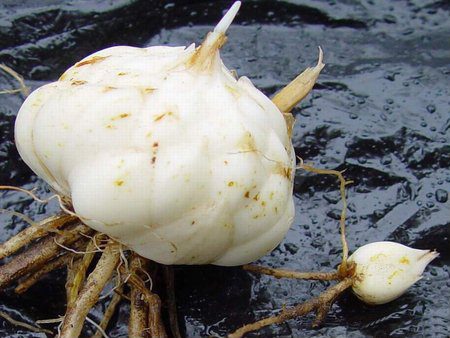
Freesia faded, the leaves turned yellow. Now you need to trim the leaves and stem. And the bulbs are watered and fertilized for about another 40 days. At this time, the onion children are growing. It is important to remember - you can’t leave the bulbs in the soil for the winter, they will freeze! Therefore, the bulbs must be dug, cleaned, discarded damaged. Then they are treated with manganese or fungicidal solution. Then they are sent for drying in a dry and very warm room (temperature in the region of 24-25 degrees).
Storage
After that, they are stored. Bulbs are stored, if possible, in peat. An important condition is that the room should be warm (in no case should be stored in the basement). And humidity is about 90%. To do this, you can put a tank of water under the container where the bulbs are stored.In the month of March, the bulbs must be shifted to a cooler place, where the temperature will be 15 degrees. This will ensure good flowering of freesia in the summer on the flower bed.
See also: cucumbers in a polycarbonate greenhouse planting and care.

